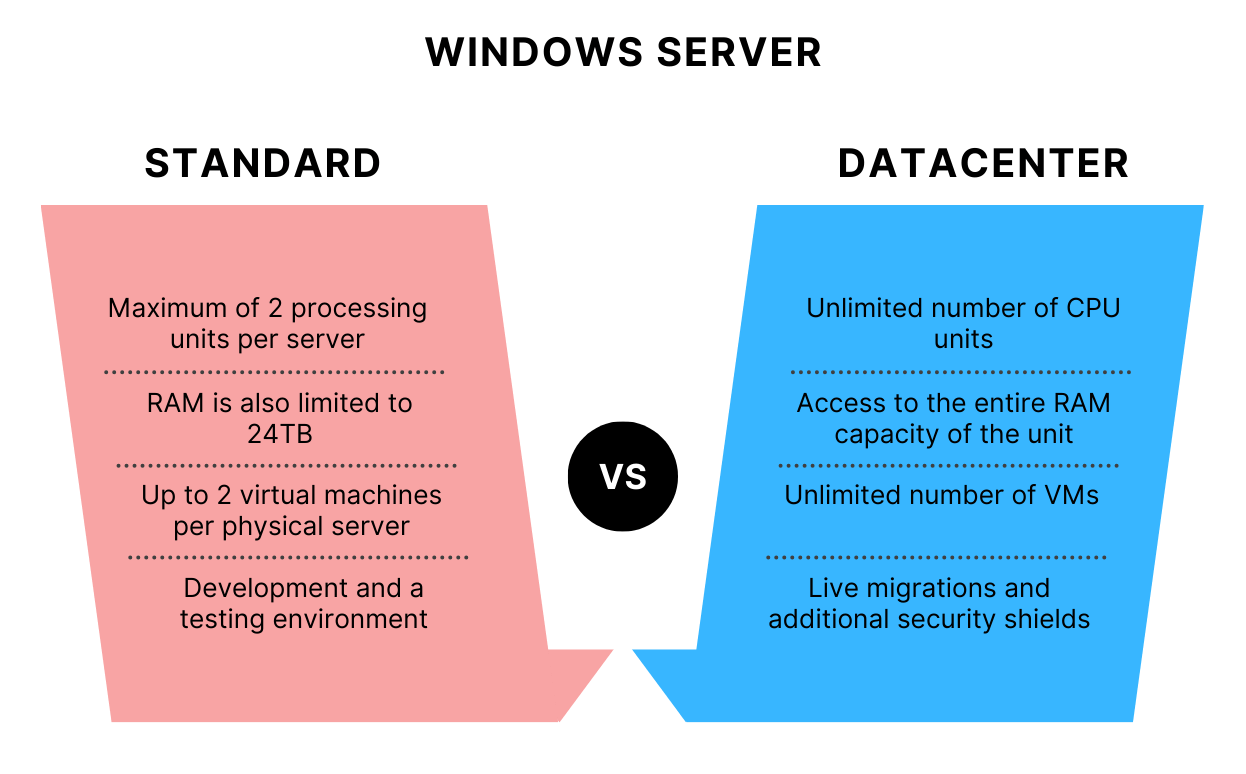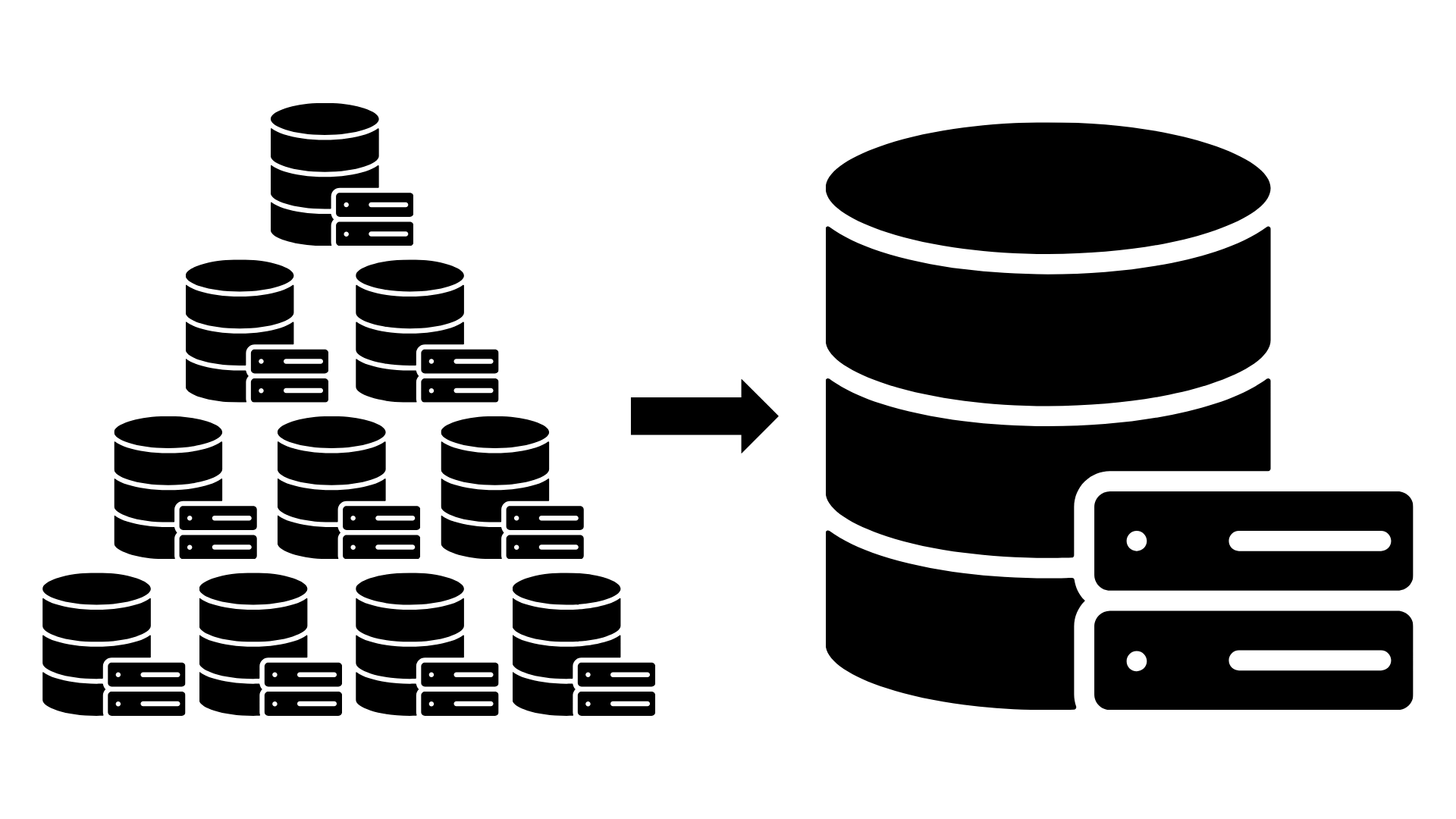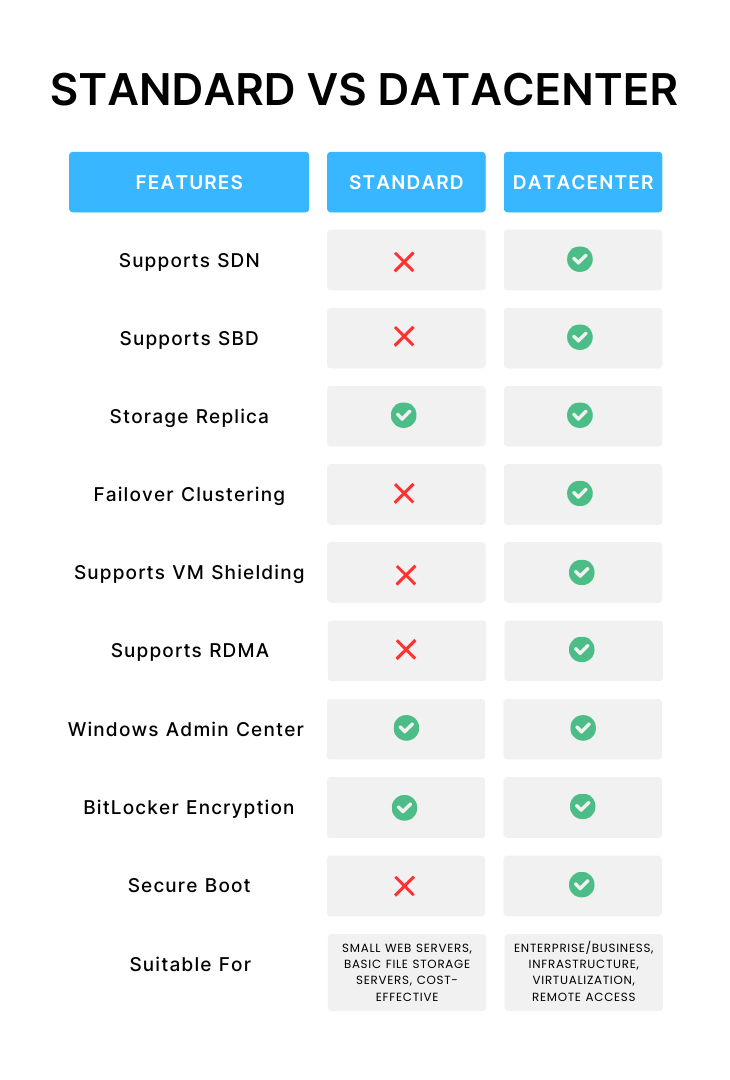Standard vs Datacenter Windows Server Edition
When it comes to choosing a Windows Server license for your personal project or business, it can be quite a hassle. While most providers that are an official SPLA partner can offer you a license directly when you get hosting, things are a little bit different when you want to purchase an individual license for your own needs.
However, you might be surprised to learn that there is more to the traditional Windows Server licenses than you might think as there are 2 distinct editions that you can choose from - the Standard and the Datacenter license with both having their own advantages and setbacks based on what you might need.
This is why we are going to be comparing both licensing types, delving deeper into their features, cost and limitations so that you can make an informed decision when choosing a license!
So whether you are looking for easy scalability, cost-effectiveness or compatibility, we’ve got you or your business covered! From small local businesses and personal projects to big enterprise corporations, there is a Windows Server that will always fit your needs!
Resources, Features & Security
Now, while you might think that the 2 types are quite different from one another, they are not that far apart, although there are some distinct differences.
Resource Control
Each Windows Server runs on a set of preconfigured resources - CPU, RAM and storage and having the ability to make the most out of those resources is crucial when running your own business or project, especially for larger organizations and enterprises.
CPU & RAM limitations
With a Standard Windows Server license, you are more suited to run smaller individual nodes or servers as CPU cores come in packs of 2 with a maximum of 2 processing units per server. Additionally, RAM is also limited to 24TB, which can later on hinder you from scaling your servers or business if you happen to get a lot of traffic and potential customers. This is why it’s not advised to go for this particular edition if you intend to run a big online platform like an e-commerce business or if you are a large service provider.
With a Datacenter type, you are able to license all cores on a physical server, which means that you can get an unlimited number of CPU units, while also having access to the entire RAM capacity of the unit. This ensures better scalability and leaves you with room to grow your business further, while also proving to be a more cost-effective solution for larger projects and corporations. Not only that, but it also opens up the door to virtualization, which can help with resource, project and personnel management, boosting productivity and increasing efficiency.
Virtualization capabilities
Speaking of virtualization, the Standard edition will only allow you to create and manage up to 2 virtual machines per physical server. While this might not seem like that much, it is a perfect option for smaller businesses that don’t require additional features and a lot of resources to operate. Some examples could be a personal project, a portfolio or a small local business that is mainly aimed at providing information or offering a small number of goods online. Having 2 VMs will also be a great option for getting a development and a testing environment, allowing you to thoroughly check everything before deploying it on the main server.
With a Datacenter license on the other hand, you are capable of creating an unlimited number of VMs due to the fact that the license can utilize all resources of the physical server. Not only that but you also get access to advanced features like live migrations and additional security shields for your virtual machines, which makes this particular license type a go-to option for large software development companies, enterprises and platforms that specialize in retail or online services.

Client Access Licenses
One thing that both Standard and Datacenter editions support is a Client Access License (CALs), which is used to set up additional user profiles that can be used to gain enclosed access to the virtual machines and the server. This is because CALs enable access for both users and devices across a particular network, offering entry to file servers remotely. There are 2 types of CALs - per-user and per-device with each having its own advantages and setbacks.
Generally speaking, per-user licenses are better for smaller organizations with a few users, but per-device CALs are a more suitable option for companies and businesses that have a lot of devices that need remote access.
Advanced Features
The next thing that we want to focus on is the advanced features that both types of licenses can offer as this is the primary difference between them.
Software-Defined Networking (SDN) & Storage Spaces Direct (SBD)
In simple terms, SDN is a networking tactic used to separate the unit that decides how the traffic flows from the unit that forwards the traffic. This allows for a finer tuning of the system, making the network much more flexible, allowing for process automation.

SBD, on the other hand, is a software-defined storage solution that enables you to combine multiple internal storage drives in one shared storage pool, which can handle higher workloads and offer additional features like automatic data management and caching which allow for scalability and better overall performance.
While both seem quite impressive, it is important to know that the Standard Windows Server license type doesn’t offer built-in support for SDN nor does it come with SBD. As a matter of fact storage options are limited to the traditional Storage Area Network and Network-Attached Software solutions that primarily work by utilizing the network.
The Datacenter license unlocks the true potential and power of both SDN and SBD, enabling you to manually configure, manage and automate your network. This granular control makes this license much more flexible and customization-friendly.
Storage Replica vs Failover Clustering
The next feature that we want to discuss is storage security. Standard Windows Server licenses offer Storage Replica as a recovery option and it works by simultaneously replicating volumes between different servers.
Datacenter licenses offer Failover Clustering in addition to the Storage Replica option. This clustering ensures a steady stream of constant uptime by automatically transferring the workload to another server should another one fail. This makes Datacenter licenses a perfect option for critical applications that require zero downtime and constant operations at maximum performance and level which can be suitable for large corporations and projects such as online retail stores.
Shielded VMs & Remote Direct Memory Access (RDMA)
Moving on, we want to touch upon features like virtual machine shielding and RDMA. VM shielding encapsulates a number of securing techniques that can protect your server, while RDMA enables direct data transfer between the memory of two systems without having to communicate through the operating systems.
Standard Windows Server licenses don’t come with a shielding option nor do they offer RDMA. Datacenter licenses, on the other hand, come equipped with both, enabling you to create and manage multiple virtual machines, while adding another layer of security.
Management & Security
Next up on our comparison list we have server management and security. While we did cover some aspects in the previous section, it’s important to give a full perspective of both license types and their security features.
Windows Admin Center & PowerShell Tools
Both editions support the browser-based Windows Admin Center, which is primarily used to simplify server management. The Standard license even includes basic PowerShell commands which can allow for scripting automation. The Datacenter edition comes equipped with more modules, which offer greater flexibility and automation that can handle complex deployments.
Networking Protocols & Encryption Differences
Similarly to the Admin Center, both licenses support core networking protocols while also offering BitLocker encryption to further protect data. The Datacenter license does also offer additional security features like Secure Boot, which can be used to prevent unauthorized access while the system is loading. It can also utilize the Encryption Pack to secure network traffic.
Additional Management Tools
In terms of management tools, the standard edition comes with basic server tools like server manager and group policy, whereas the Datacenter type has even more tools like failover cluster manager.
Licensing Models & Pricing
The final thing we want to cover is the licensing model and the difference between both. The standard edition comes with a per-core licensing model, meaning that you will need to get licenses based on the number of physical cores that your server has, which can be quite useful for small-scale applications. The Datacenter Windows Server license type has a per-server licensing model, which enables unlimited core usage for a single physical server, which is more useful for large deployments and virtualization.
Both editions also offer a subscription-based additional licensing like Office 365 as well as other software licenses which can be bought through a single purchase.
The next point that many people raise is whether it is possible to upgrade from the Standard to the Datacenter edition. The answer is yes, but it requires you to purchase additional per-server licenses, which can be quite expensive.
There are also open licenses available for smaller organizations that come with discounts on per-core and pre-server licenses. Not only that but there is also Volume licensing which can offer more significant discounts and additional benefits like centralized license management.
Which license type should you get?
Overall, the Windows Server Standard edition is suitable for small and medium businesses that don’t require virtualization and have a predefined number of CPU cores. This server type is also perfect for small web servers as well as basic file storage servers that need to be cost-effective.
The datacenter edition is more suitable for large enterprises and businesses that have a complex infrastructure and need to utilize virtualization and remote access. It’s also aimed towards organizations that need high resource availability, additional file security and advanced protection. Due to the additional SDN, SBD and VM shield features, the Datacenter license is the perfect choice for all types of businesses that are looking for consistent performance, stability and scalability that they can benefit from.


